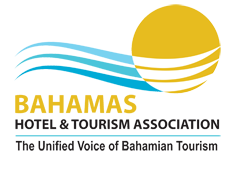Bahamas Hotels May Fully Recover By Year End
Commenting on the Nassau/Paradise Island hotel sector’s performance for March and the 2010 first quarter, during which room revenues increased by 16 per cent and 6.7 per cent respectively, Robert Sands said that while the trend was positive, the industry was “not prepared to hand our hats yet” on the notion that consistent improvement would be seen throughout the remainder of 2010.
“I think they were fairly close to our forecast position for March,” Mr Sands said of the data released last week by the Ministry of Tourism and BHA.
“The results achieved were by and large our forecast position.”
He acknowledged, though, that there was “no question” that the joint Ministry/industry Companion Fly Free promotion had made a key “impact” on the Bahamian tourism industry, in terms of attracting visitors and enabling hotels to achieve the numbers they had during the 2010 first quarter.
However, this initiative coupled with other marketing/TV promotions by individual Bahamas-based hotels meant that “acquisition costs” to bring tourists to this nation had increased year-over-year for many Bahamian properties.
The BHA president said that while first quarter trends were expected to continue, the sector – the largest private sector employer in the Bahamas – remained “cautiously optimistic”. “We need a sustained period of growth,” Mr Sands told Tribune Business. “The foundations are taking hold, but it is still too early to say it will continue through the rest of the year. I think it will, but we’re not prepared to hang our hats on that particular point yet.
“We want to see continued improvement, positive trends year-over-year. We want to see improvement that gets us back to 2008 levels, not so much 2009. I think that by the end of this fiscal year, when we see the type of results we will have achieved, I think we will have made at least 50 per cent of the inroads to getting back to that level. We’ll be half-way there by the end of the year if we continue on this particular trend.”
Mr Sands, who is also Baha Mar’s senior vice-president of governmental and external affairs, emphasized that there was still “a lot of uncertainty out there”. The Bahamian hotel industry, he said, still had to navigate the relatively slow summer months, and had “the nuances of hurricanes to overcome”.
Then there was the state of the US economy, the key market for the Bahamian tourism/hotel industry, generating 85 per cent of its customer base. “There’s a lot of uncertainty out there that impacts our ability to move forward,” Mr Sands said. “The volcano in Iceland had an impact on our ability to continue growth levels, but such is life. That’s the nuance of our industry.”
Demand for Bahamian hotels and tourism is largely a derived demand, especially during a recession, being highly dependent on consumer confidence in employment and income levels in their home countries. This factor is largely out of this nation’s control, highlighting one of its key economic weaknesses, given that tourism is forecast to account for 61 per cent of Bahamian gross domestic product (GDP).
“There are many factors we can’t control,” Mr Sands said. “The one good thing we are hoping for is that there continues to be a sustained improvement in the generation markets for our business. One US employment increases, we will return to a level of normalcy. We will not get back to business levels as they were two to three years ago. It will still remain challenging. Hotels are spending more to attract new business. Acquisition costs for business are much more costly than last year.”
The demand for travel needed to return, Mr Sands said, along with group bookings, which had not returned to pre-recession levels yet. Both factors were key to a Bahamian hotel/tourism economic recovery, Mr Sands said, adding: “Group bookings are key to hotels having a book of business which they can grow on.”
Meanwhile, faced with an increase in the Bahamas Electricity Corporation’s (BEC) basic tariff rate by July 1, 2010, which is estimated at an average 5 per cent, Mr Sands said the BHA and wider hotel industry had proposed a series of measures they hoped would be implemented to ease any impact on the sector.
“Any increase in costs to our sector we believe is not warranted at this point in time. We will be making some recommendations as to how to address these costs,” the BHA president said, adding that they hoped the proposals did “not fall on deaf ears”.
The BHA is proposing that the import duty rates on energy-efficient equipment and products be lowered or eliminated, “especially” if hotel properties are using energy-efficient practices.
The organisation is also recommending “stand-by generation rates”, which would allow Bahamian hotels to switch to this power production method “if we get beyond certain levels of peak demand”. Peak demand, the BHA said, could be looked at more frequently during the year.
Mr Sands said another recommendation was “increasing the amount of interest on the [BEC] deposit that is paid back to the company over a period of time”. He added: “These savings should help to mitigate against any rate increase going forward. We believe we have some recommendations that will help us mitigate against any level of increase. We hope these ideas do not full on deaf ears.”
As for hotel industry employment, and recovering the several thousand jobs lost in late 2008 and 2009, Mr Sands said this would be “directly related to business demand”. While the sector had not been adding any jobs in substantial numbers, nor had it been shedding any beyond normal attrition rates.
Returning to pre-September 2008 business levels is a key benchmark for the Bahamian hotel industry, since while the 2010 figures year-to-date have been ahead of 2009, they are up against very weak comparatives. For March, the BHA/Ministry of Tourism data showed that the 14 major New Providence hotels achieved an average 77.6 per cent occupancy rate, compared to 69.7 per cent in 2009, a rise of 7.9 percentage points.
This resulted in a 9.3 per cent increase in room nights sold and, combined with the $16 increase in average daily room rates (ADRs) from $269.14 to $285.64, generated a 16 per cent room revenue rise. While nine of the 14 reporting New Providence properties reported a room revenue rise, the Ministry of Tourism/BHA pointed out: “While the overall results showed improvement over 2009, they are still below comparative figures for March 2008 when occupancy stood at 81.2 per cent and ADR was $315.41. In March 2008, room nights sold and room revenue was still 8.3 per cent and 19.6 per cent above March 2010 levels.”
For March, some 36 per cent of the 14 hotels surveyed generated increased room revenues through rising room nights sold and ADRs, “all of them showing double-digit room revenue increases ranging from 11.1 per cent to 45.7 per cent”.
A further 36 per cent of resorts saw an increase in room nights sold with lower ADRs, all but one achieving an increase in room revenues. Finally, some 21 per cent of the 14 properties surveyed saw both room nights sold and ADRs decline, along with room revenues. As for the 2010 first quarter, hotel occupancy averages rose to 67.2 per cent compared to 64 per cent in 2009. The ADR for the three months to March 31, 2010, was $260.60 compared to $254.94 the year before, with hotel room revenue up 6.7 per cent. Some 10 out of the 14 hotels surveyed reported room revenue increases, with hotel room nights sold up by 4.3 per cent.
Breaking the numbers down, the BHA/Ministry of Tourism reported that 36 per cent of the 14 properties surveyed had increased room nights sold with lower ADRs, growing their room revenues in all cases bar one. Some 29 per cent increased both room nights sold and rates, thereby boosting revenues. A further 21 per cent saw a reduction in room nights sold with higher ADRs. Two of these three properties overcame the room night loss to generate higher revenues, but two hotels saw a decrease in all performance measurements.
The 2008 first quarter comparatives, though, show the Bahamian hotel industry has some way to go to conclude its recovery. Back then, average occupancies stood at 73.7 per cent, and ADRs at $282.04. Room nights sold and room revenue were 13.9 per cent and 31.4 per cent above their 2010 comparatives.
Source: The Tribune


